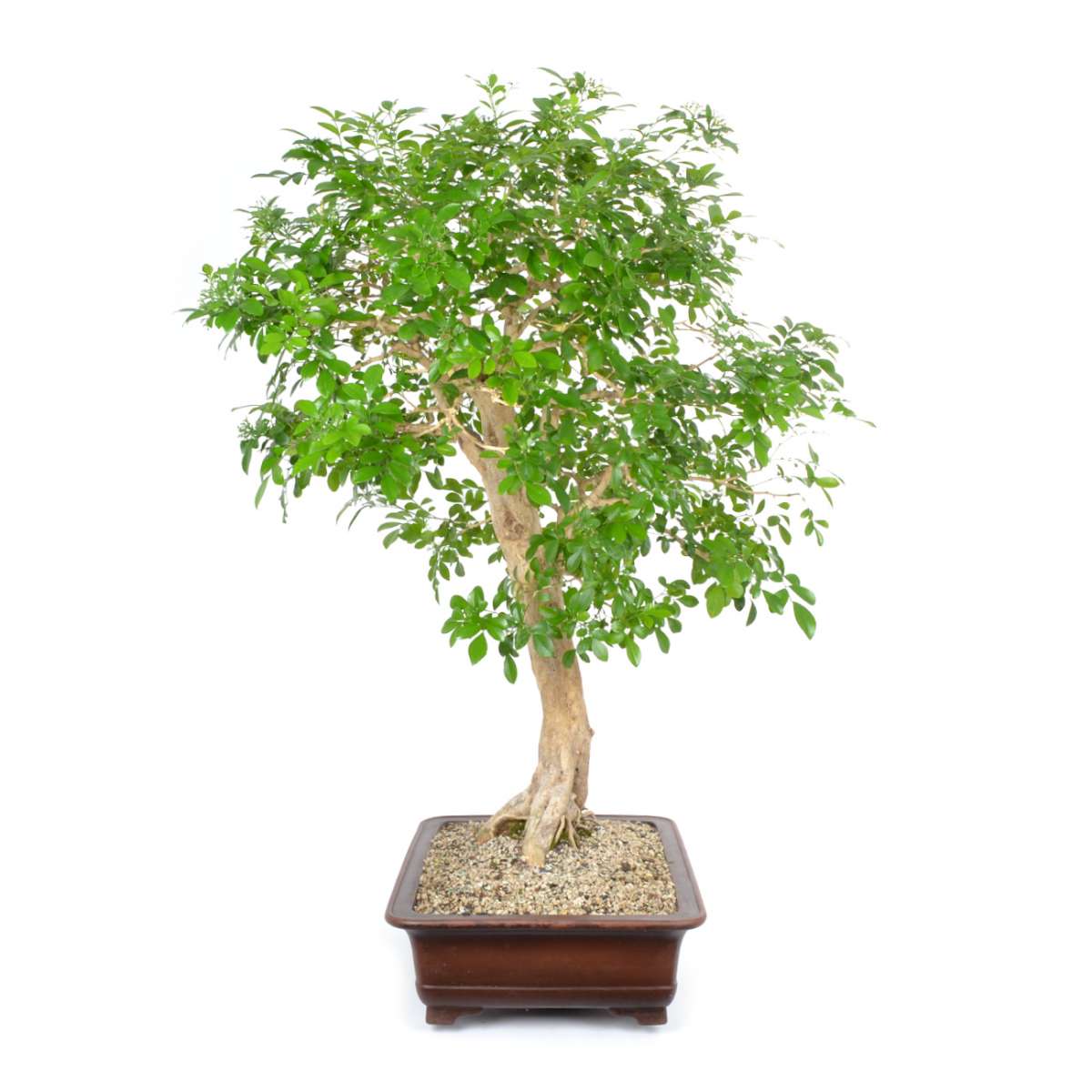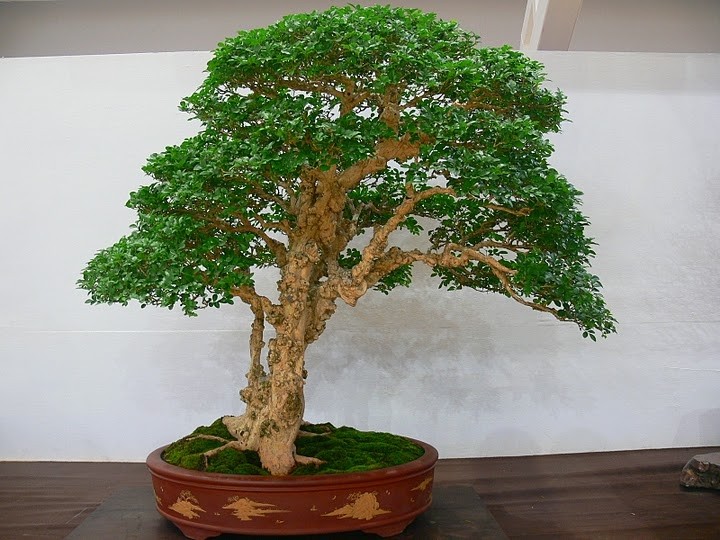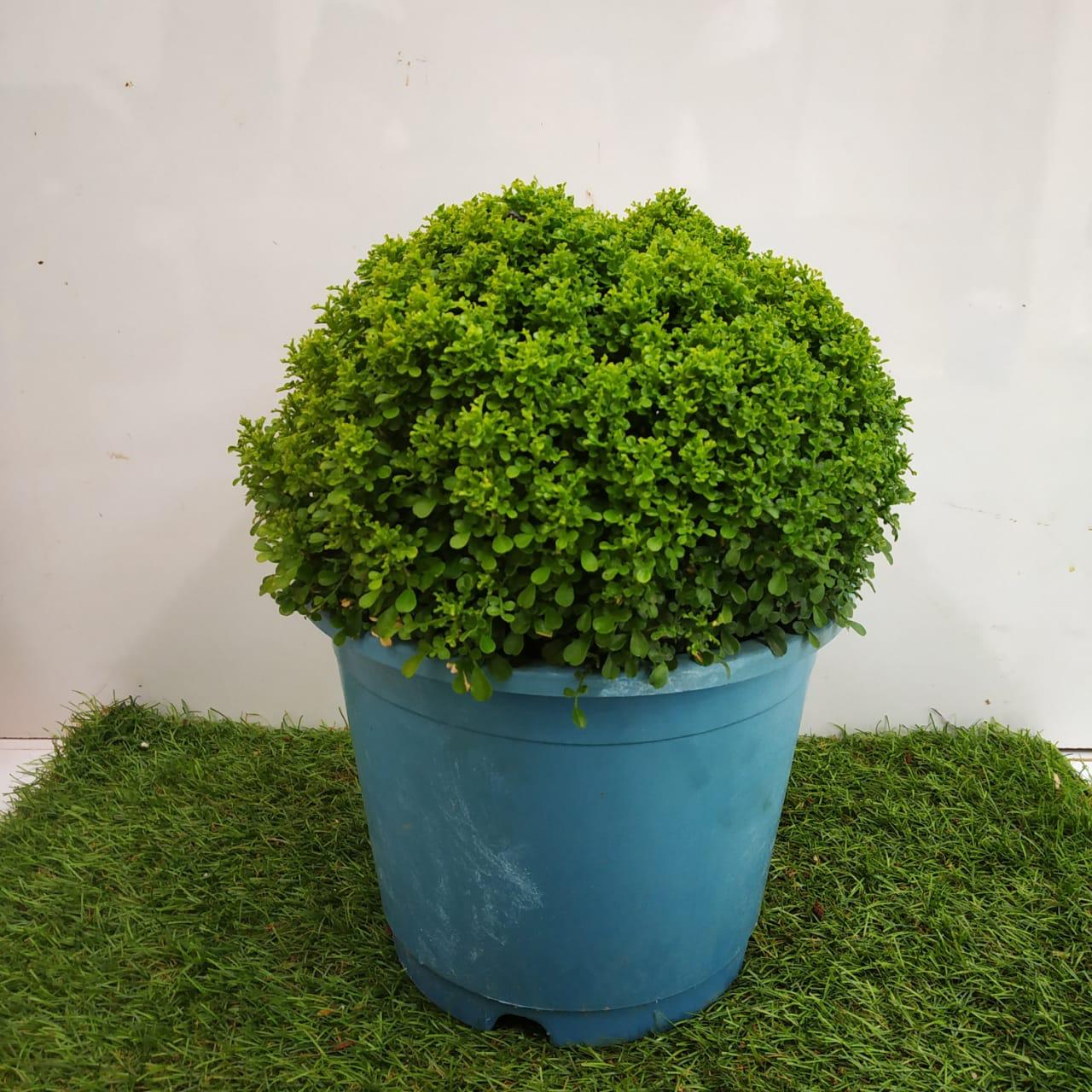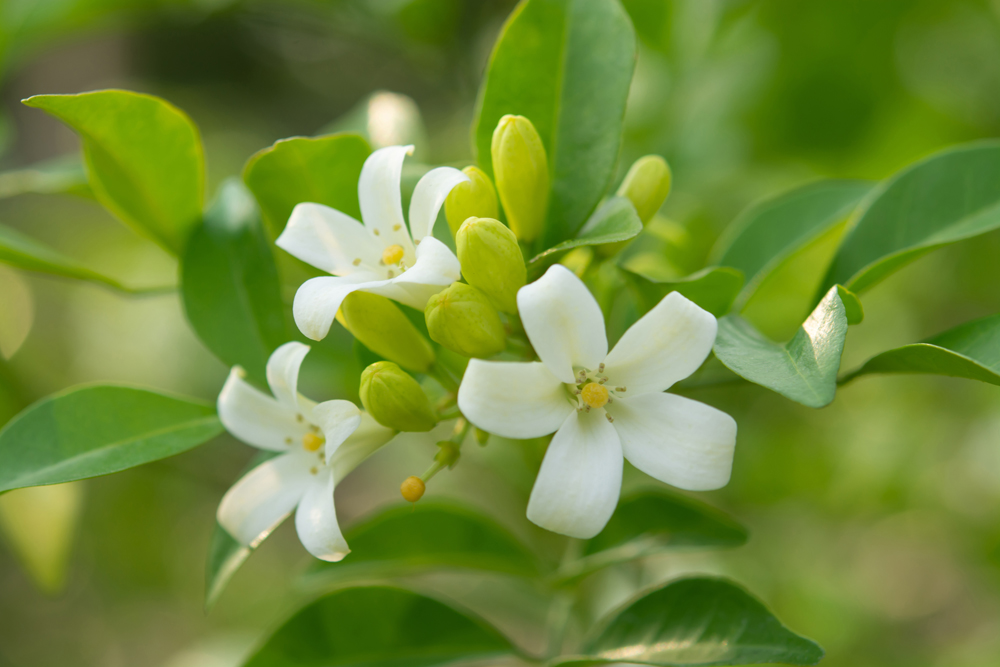
Murraya Paniculata, bonsai da interno, 29 anni, altezza 36 cm Amazon
Murraya paniculata Orange Jessamine - Murraya Paniculata ByJerry Meislik Introduction The Orange Jessamine is a material that is widely used for bonsai in the warmer areas of Southeast Asia. The plant is in the citrus family and it naturally gows as a very small tree or large shrub.

Murraya Paniculata Mock Orange, or Orange Jessamine, is a simply
Repotting: Repot in the spring every two to four years. Root prune at the same time and then keep the pot and soil warm to encourage the regeneration roots. Soil: Use bonsai soil or a mix of loam, peat moss, and sand at a ratio of 2:2:1. Pruning: Branches can be pruned any time of year. Trim back young plants to between one and three leaves.

Murraya paniculata Tropische Bonsai Bonsai Indoor Bonsai
Pruning, wiring and repotting of a miniature Murraya Paniculata (Orange Jasmine) bonsai tree.Bonsai wire : https://amzn.to/2MZdPBcBuying links of bonsai soil.

Murraya Paniculata Bonsai Consigli utili sulla coltivazione Vivaio
Murraya paniculata, commonly called the Orange Jessamine or "Satinwood", is a tropical, evergreen tree bearing small, white, scented flowers, which is commonly grown as an ornamental tree in its native countries of Southeast Asia, China and Australasia. Murraya is closely related to Citrus but belongs to the Rue family.

Kamini (Murraya paniculata) Bonsai Tooth Mountain Nursery
Characteristics Evergreen bush or tropical tree. Very appreciated for its orange bark and its odour like a jasmine during flowering. Location In a Mediterranean climate in summer in the exterior. Protect against cold in winter. In colder zones, inside a greenhouse during the whole year. Watering Abundant in summer and moderate in winter.

Making bonsai murraya paniuculata, kamini YouTube
Murraya paniculata, commonly called the Orange Jessamine or "Satinwood", is a tropical, evergreen tree bearing small, white, scented flowers, which is commonly grown as an ornamental tree in its native countries of Southeast Asia, China and Australasia. Murraya is closely related to Citrus but belongs to the Rue family.

Murraya Paniculata, bonsai da interno, 29 anni, altezza 36 cm Amazon
Murraya paniculata is a tree that typically grows to a height of 7 m (23 ft) but often flowers and forms fruit as a shrub, and has smooth pale to whitish bark. It has pinnate leaves up to 170 mm (6.7 in) long with up to seven egg-shaped to elliptical or rhombus -shaped.

Bonsai Murraja (Bonsai Murraya paniculata) Wiedza
Light Orange jasmine plants require protection from hot, direct sunlight. Locate the plant where it receives morning sunlight and afternoon shade, or where it will get dappled sunlight or dappled shade all day. Soil Plant orange jasmine in well-drained soil that is free of nematodes (roundworms).

Pin by Alexander Duque on Murraya paniculata Murraya paniculata
Murraya paniculata (Orange Jasmine, Chalcas) Orange Jasmine is a medium-sized shrub, with an upright and spreading, compact habit and dense crown of glossy. Uses: Screen, Hedge, Bonsai, Specimen, Container, Wildlife Size/Shape Growth Rate: Moderate Tree Shape: Round Canopy Symmetry: Symmetrical Canopy Density: Medium Canopy Texture: Medium.

Bonsai Orange jasmine, Murraya paniculata, no. 3496 Bonsai, Bonsai
Orange Jasmine, scientifically known as Murraya paniculata, is an evergreen shrub native to Southeast Asia and some parts of Australia. The shrub can be grown as a hedge or in various thicket styles. It blooms with fragrant white flowers that give off a sweet scent.

Murraya paniculata dwarf Email WhatsApp. +66
Murraya paniculata Common Name: Orange Jasmine (Satinwood) General information: Attractive slender, upright, yet with a dense head type of shrub or tree with compound evergreen leaves that are made up of pear- shaped leaflets. Fragrant, white, orange-like blossoms which are followed by bright, decorative, red fruits. Family: Rutaceae Lighting:

Dwarf Murraya Paniculata Large (Dwarf Kamini Bonsai) NurseryBuy
This Plant has been used for many purposes. The leaves have been used as a tea, and the roots have been eaten to relieve stomach pain or diarrhoea. The stems have also been used as an infusion to treat asthma and bronchitis, as well as a treatment for sore throat, coughs, and colds.

Murraya Cây kiểng bonsai, Nghệ thuật, Cây
1. Introduction. The genus Murraya (Rutaceae) is made up of about 14 species.Murraya paniculata (L.) Jack is a small tropical evergreen shrub, native to the tropical and subtropical parts of the world, including southern China, Taiwan, India, Nepal, Northeastern Pakistan, Sri Lanka, Southeastern Asia (i.e., Cambodia, Laos, Myanmar, Thailand, Vietnam, Indonesia, Malaysia, and the Philippines.

Murraya paniculata Bonsai BCI
This is a murraya paniculata root over rock making video. Where I choose a Dwarf Orange Jasmine plant and want to do a root over rock bonsai.Murraya panicula.

Murraya Paniculata, bonsai da interno, 29 anni, altezza 36 cm Amazon
AQIB JABED |#Botanical: #Murraya #Paniculataকামিনী গাছের যত্ন বেশি ফুল পাওয়ার পদ্ধত্তি:.
FKB Escuela Bonsai Mallorca MURRAYA PANICULATA (Rutaceae)
Murraya paniculata bonsai is a good addition to your home with its cluster of white colored flowers and its fragrant citrus smell. Murraya paniculata is a bushy shrub or a small tree belonging to Rutaceae family. It goes by several names- orange jasmine, china box, mock orange, honey bush ,orange jessamine, satinwood to name a few.